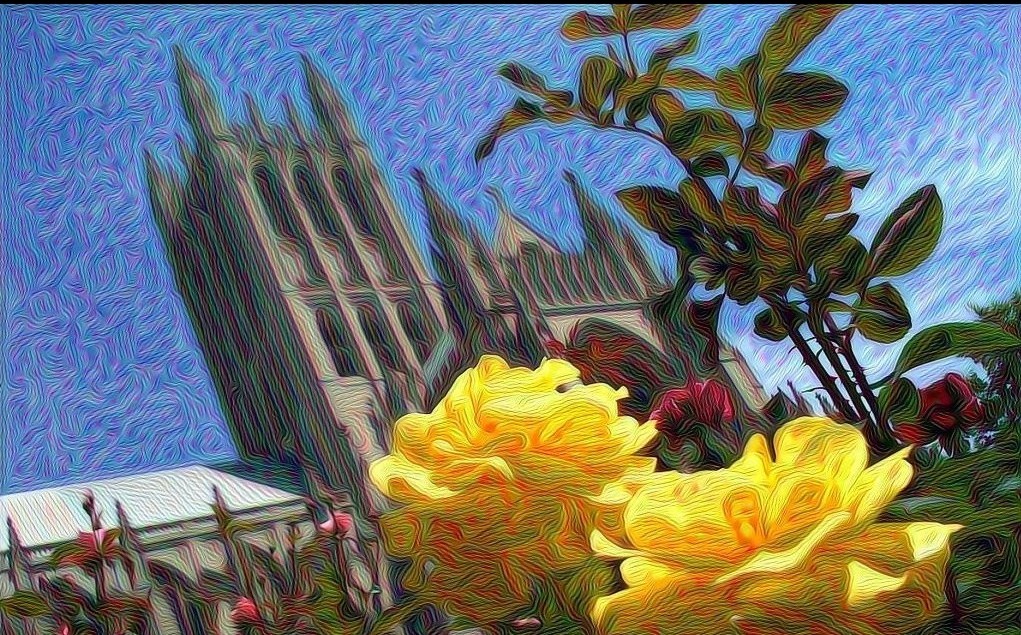
The characteristic visuals of many psychedelics like LSD tell us a great deal about how our brains are structured. | Image Source: Flickr user Blake Patterson
As you come up on LSD, moving objects leave long trails behind them. Elaborate, symmetrical mandala-like designs appear over surfaces, and noisy patterns like clouds and static come together into recognizable imagery, often of faces. Surfaces seem to breathe or flow. The concept of time unravels, and the order in which events occur becomes unclear. The boundaries between you and the rest of the world blur, and your sense of self breaks open.
All of these are typical, characteristic effects of many psychedelics, and while you can personally learn a great deal about your mind from the deep introspection psychedelics afford, an overlooked fact is that these perceptual changes tell us a lot about how the human brain works.
What are Psychedelic Visions?
Anyone who’s taken psychedelics (or, for some, even high doses of marijuana) is probably familiar with the highly symmetrical geometric patterns you tend to see. They’re often the harbingers of the psychedelic come-up. The fact that they show up so reliably, though, raises some questions. Pretty much everyone, regardless of their experience or expectations, sees them, which means it’s likely that something quite fundamental is happening in our brains. We haven’t fully teased out exactly what’s happening yet, but one popular theory is that the neurons in the brain’s visual cortex are firing at random — normally, they only fire in response to seeing lines or edges. To put it simply: what you’re seeing is the actual layout of your own neurons.
Order from Chaos
Other phenomena, like the trails or “tracers” you see (a great example of this is simply waving your own hand around) are byproducts of psychedelics’ ability to loosen something called “perceptual binding.” Basically, when we live our lives, there are a lot of things going on at once with all the sights and sounds we’re bombarded with as we move around in the world. Our brains try to impose some order onto all this chaos by bundling everything into neat little packets in time, so we can say that particular sights, sounds, and other senses happened at once at a certain time. It’s part of what makes us mammals so successful—we can figure out causes and effects because of this process.
One way in which psychedelics alter our consciousness is by loosening this process. So those trails happen because your vision isn’t “overwriting” itself from moment to moment—in a way, your brain is still echoing from where you saw your hand before it moved. It’s a little bit like seeing two seconds into the past.
Our Ego and Connection with the Outside World
Perceptual binding may also play a role in creating our sense of self—our ego. Without the unification of our senses and grounding in time from moment to moment, we don’t have the narrative that “I” am experiencing something. That’s why ego death—the loss of a sense of self—is such a common psychedelic effect at high doses. Though many find this experience frightening, for some it’s very therapeutic. Interestingly, the psychedelic 5-MeO-DMT tends to specifically evoke ego death. When we lose our discrete sense of self, the boundaries between ourselves and the stuff we think of as separate from us—the world outside and other people, for instance—blur, and we see ourselves as more connected.
One of the many reasons psychedelics are so important is that they give us tools to better understand our own brains and consciousness. This is more than just an academic novelty—understanding what happens when our everyday consciousness breaks down gives us important insight into mental and neurological disorders.
On a personal level, understanding what’s happening in your own mind gives you personal insight and skills to cope with the inevitable strangeness of life. We can see the far-reaching effects of this from psilocybin studies with cancer patients to the therapeutic benefits of 5-MeO-DMT. For those interested in expanding and exploring their consciousness, psychedelic therapy can be a way to find a sense of connection, by seeing yourself not as a separate entity, but as an integral part of the world.










That human consciousness ain’t human.